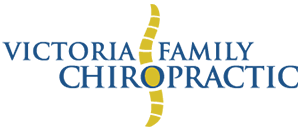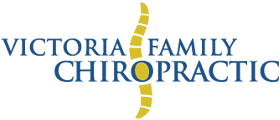Chiropractic for Headaches

Headaches are a common source of pain for a large number of Canadians. A 1994 Canadian study found that 76% of males and 65% of females suffer from non-migraine headaches and 7.8% of males and about 25% of females report getting migraines (link). Many people suffer and just get used to them, or use medications to deal with the discomfort. Chiropractic has been shown to reduce the frequency of headaches (link).
There is a wide variety of over-the-counter and prescription medications which have been developed to relieve these symptoms. Unfortunately, they generally do little to address the underlying cause of the problem. In addition, many of these drugs have unwanted and dangerous side effects, particularly if they’re used often, over a prolonged period of time, or in combination with other medications.
The Most Common Headaches Treated by Chiropractors
Tension Headaches: These are the classic and most common type. Tension headaches are usually associated with dull pressure on the sides of the head. They are typically caused by muscle tension and problems such as trigger points, eye strain, dehydration, fatigue, or emotional stress. Muscle tension can cause a variety of problems including spinal fixation or misalignment, which in turn, can create more problems and further headaches.
Migraine Headaches: Migraines can range in severity from mild to severe. The exact cause of migraines is not known, but it is believed to be related to altered brain activity that affects nerves and how they communicate with blood vessels and chemicals (link). Common symptoms of a migraine include sensitivity to light, nausea and vomiting, and visual disturbances (called auras) such as shimmering or flashing lights. Migraines typically are more severe and they can disable people until they pass which can be a few hours or up to several days.
Cervicogenic Headaches: This classification is common and occurs because of spinal fixations that refer pain to areas such as the head and eyes. Traumas such as whiplash and concussion, chronic tension from poor posture, and stress are some of the more common reasons for these jammed spinal segments. These headaches can be difficult to differentiate from tension headaches because symptoms can be similar. Cervicogenic headaches are often stronger than tension headaches with a throbbing pain that can travel around the head and face.
Can Chiropractic Help?
Headache relief is one of the classic hallmarks of chiropractic care, but now there is a large and growing body of research that supports what millions of people already know (link). There are more types of headaches than listed above and chiropractic isn’t a cure-all.
Chiropractic adjustments of the spine are used to improve the alignment, positioning, and movement of the spine and also help normalize neurological function. Improving spinal function can increase mobility, blood flow, and cellular function, leading to improved performance overall. Most chiropractors also make recommendations to improve your health and prevent future episodes. These may include stretches, rehabilitative or strengthening exercises, orthotics or foot supports, supplement or dietary advice, and ways to improve mental health. Your chiropractor may refer you to another healthcare provider if they feel it will assist you in meeting your health goals. Make sure you communicate your needs with your chiropractor to maximize your chances for the best possible outcomes.
Sincerely,
Cale
Victoria Family Chiropractic
3200 Shelbourne St Suite 203 (250) 592-5553
www.vfchiro.com
OFFICE HOURS
Monday
7:30am - 1:00pm
Tuesday
1:00pm - 7:00pm
Wednesday
7:30am - 1:00pm
Thursday
1:00pm - 7:00pm
Friday
7:30am - 1:00pm
Saturday & Sunday
Closed
Victoria Family Chiropractic
3200 Shelbourne St Suite 203
Victoria, BC V8P 5G8




